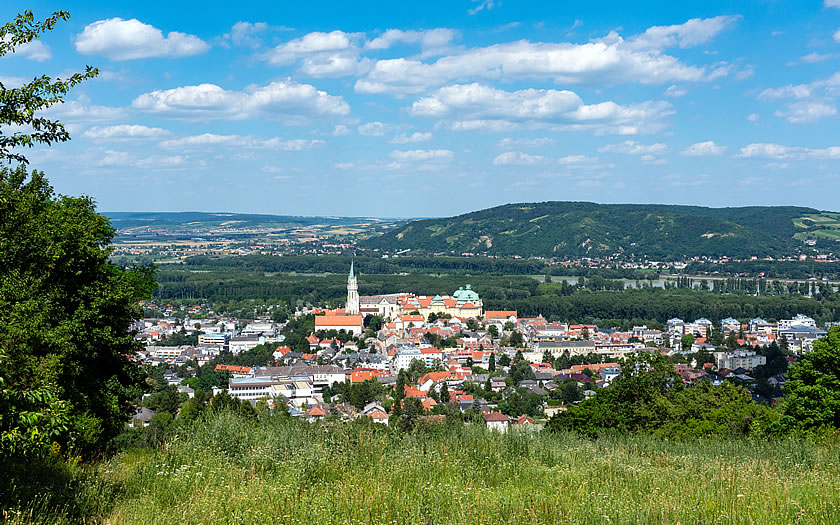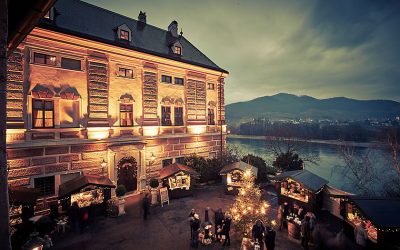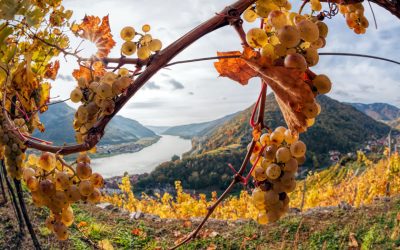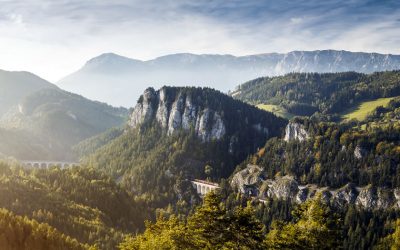The huge complex of Klosterneuburg Abbey in Lower Austria is definitely eye-catching. The two towers of the abbey church, the red tiled roofs and green crests of the abbey buildings rise high over the surrounding countryside.
Augustinian canons have been resident in the abbey since 1133. They not only take care of pastoral duties, but also run the oldest vineyard and fruit farm in Austria.
According the legend, the monastery was founded in 1114 because of a lost veil. Margrave Leopold III was out riding with his wife Agnes when her bridal veil blew away in a gust of wind. After an unsuccessful search, Leopold declared that he would build a monastery on the location if it could be found.
Nine years later the veil was discovered on a bush and Leopold fulfilled his promise. A veil alleged to be that of Agnes is still kept in the abbey treasury.
Leopold was later canonised and is now the patron saint of Austria, Vienna, Lower Austria and Upper Austria.
One of the most important examples of medieval art at Klosterneuburg is the Verdun altar from 1181, which shows events from the Old and New Testaments.
The Abbey also became the home of the ‘Holy Crown of Austria’, which was only ever removed for important events and is still on display.
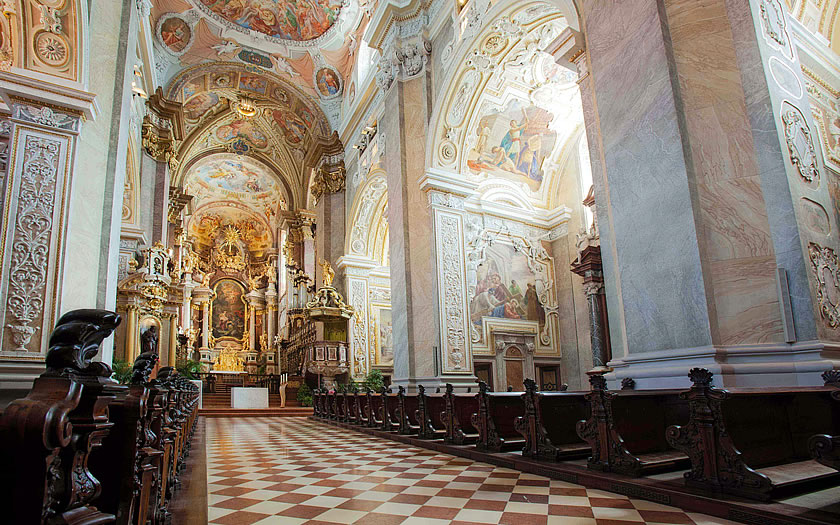
© Stift Klosterneuburg | Jürgen Skarwan
The Abbey was closed down during the Second World War as it was seen as a symbol both of Austrian nationalism and Christianity. It was re-established in 1945 and now houses around 50 Augustinian canons from around the world.
In more normal times visitors could find out what it looks like inside the monastery and what great works of art the monastery houses on guided tours.
During the corona virus restrictions, the Abbey has started to put short videos online (currently German only) which tell the story of some of the principal features and artworks in the buildings, such as the Leopold chapel with the famous Verdun altar from 1181.
A new video in the series “One Location. A Thousand Stories.” is added every Friday.
English translation of the Klosterneuburg subtitles
“I would like to welcome you to Klosterneuburg Abbey. I am Anton Höslinger and I would like to introduce our video series ‘One Location. A Thousand Stories’. Our aim is to show you some of the cultural and artistic treasures of our Abbey, especially in these days and weeks of this Corona virus when we should stay at home.”
“Here we are standing at a truly special location – the Kapitelsaal of the Abbey. Here on November 15 1136 the founder of the Abbey, Margrave Leopold III, was laid to rest. Above his tomb is the most famous of the artworks in the Abbey, the Verdun altar. This was created from 1170 to 1181 by the French goldsmith Nicholas von Verdun. It is an especially interesting work from that time as it displays 51 different biblical stories from the Old and New Testaments, where the Old Testament stories serve as introductory examples for the New Testament events.”
“We are on the threshold of Holy Week, where we celebrate the suffering, the death and the resurrection of Jesus. So I would like to show you the image of Palm Sunday on the altar. Jesus enters Jerusalem sitting on a donkey, deliberately not on a horse like a powerful knight or king but as a poor person who would use a donkey.”
“The people of Jerusalem come out of the city gate to see him, as we can see on the right side of the image. As a mark of worship they throw their clothes under the hooves of the donkey. On the left is St Peter, who follows Jesus as a representative of the apostles and enters Jerusalem with him.”
“Palm Sunday is the beginning of Holy Week. We celebrate the entry of Jesus into Jerusalem and, although we may not be able to enter the churches ourselves in these times because we should avoid gatherings, perhaps this 850-year-old image can show us what we want to remember at this time: Jesus, the son of God, is born into this world, enters Jerusalem, and with his death on the cross and resurrection redeems us.”
More information: www.stift-klosterneuburg.at

